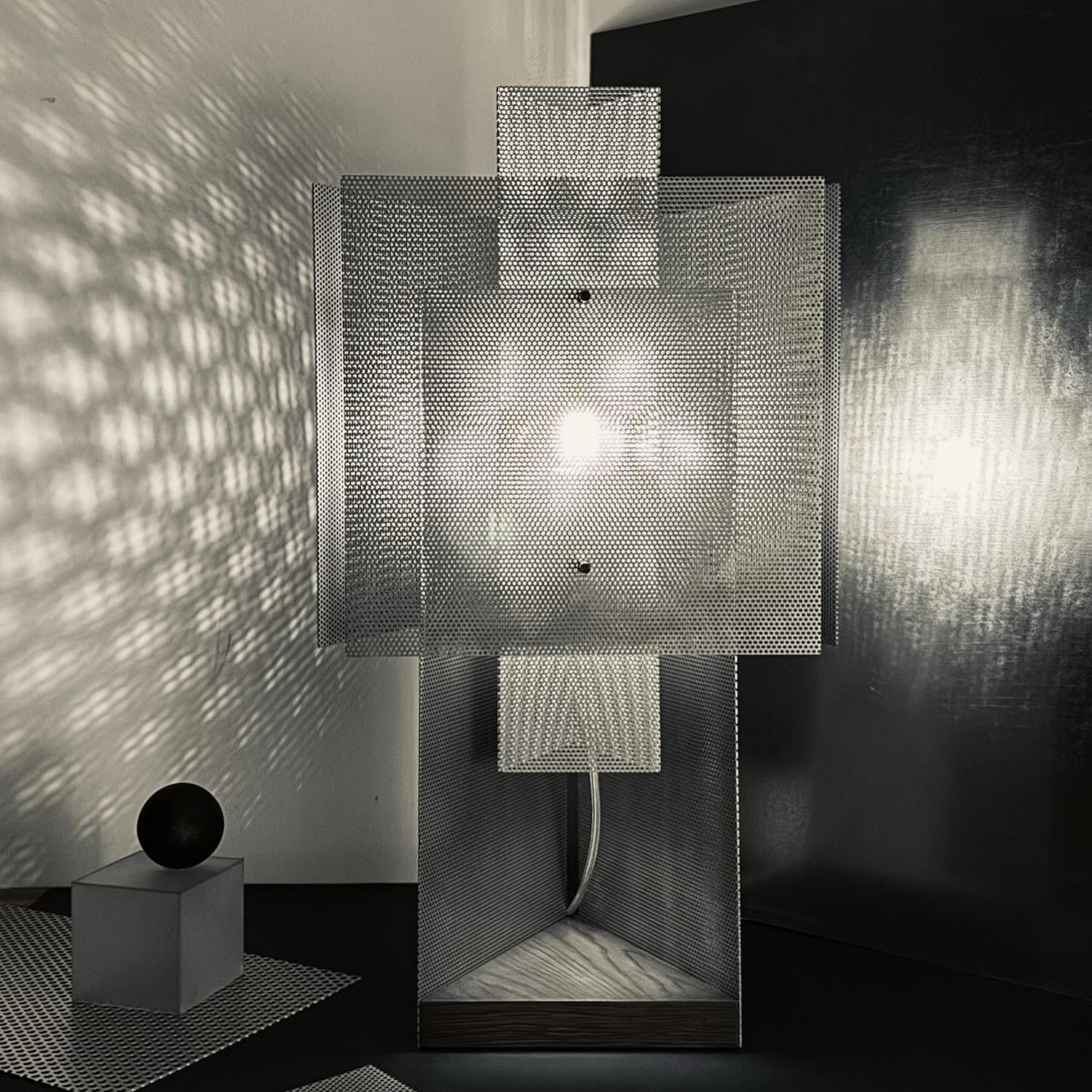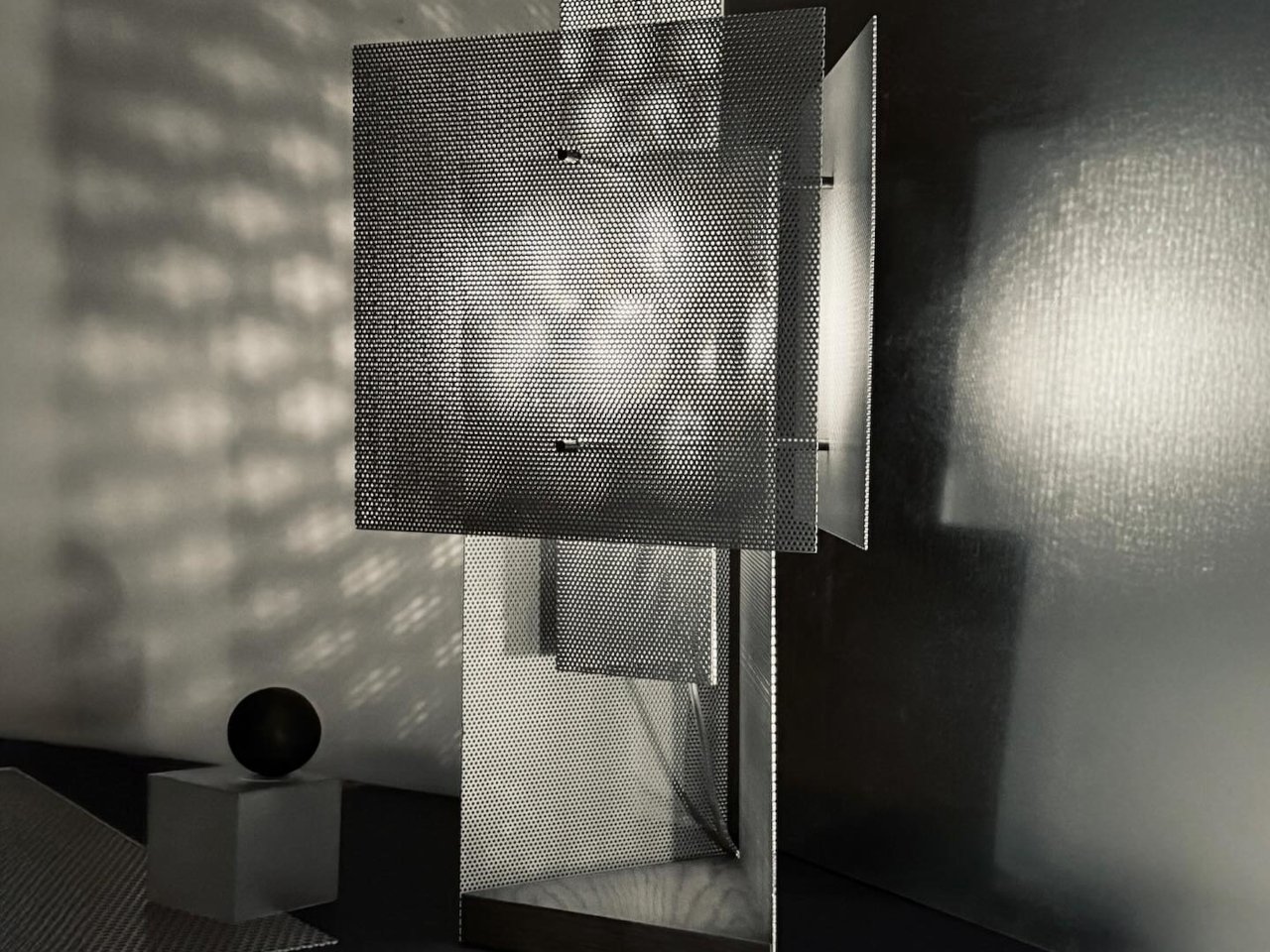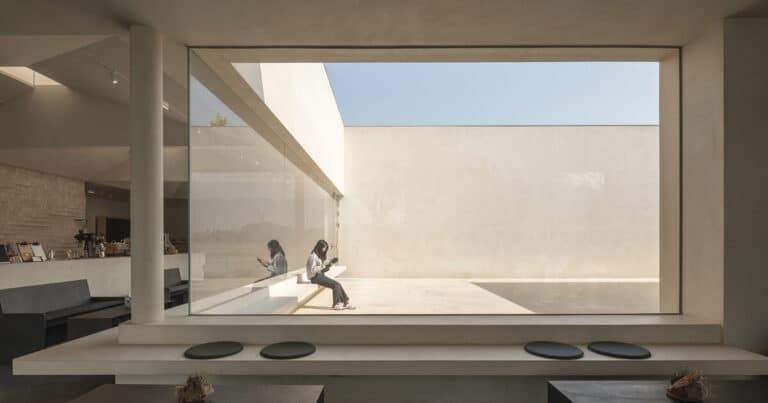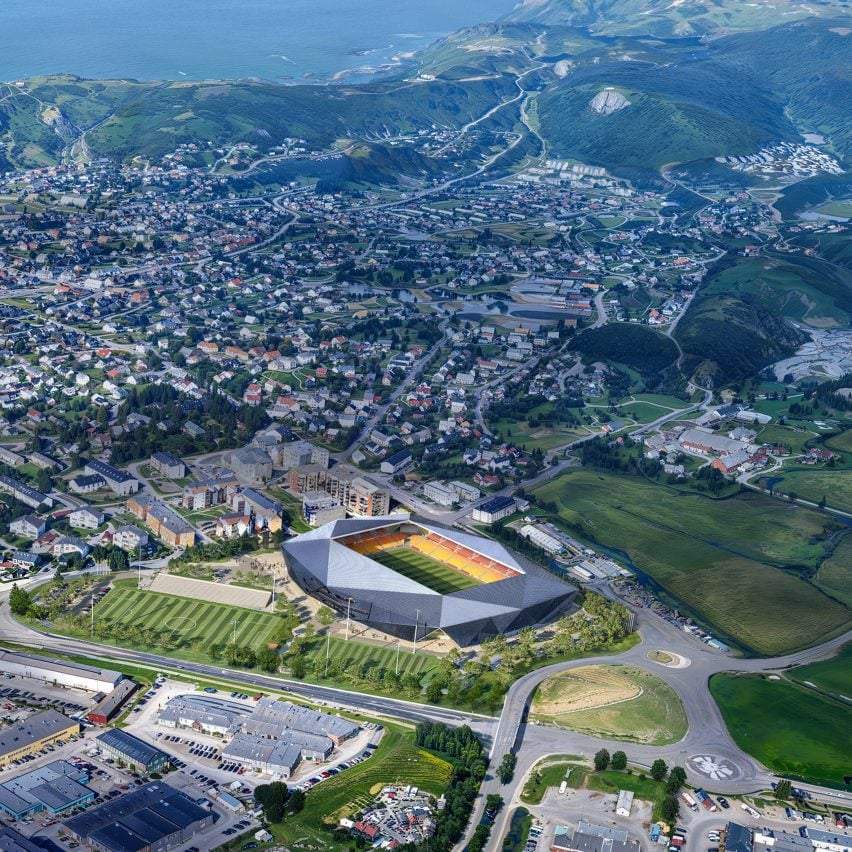How Can a Simple Detail Change the Character of a Space?
In the world of interior design, creating a distinctive atmosphere doesn’t always require radical changes. Sometimes, all it takes is a single visual element capable of capturing attention and stimulating the senses.
From Simplicity to Visual Interaction
Lighting is one of the most important tools designers rely on to reshape the overall mood of a space. Although some lamps may appear simple at first glance, their design conceals an interactive approach that only reveals itself when switched on.
Lamps that incorporate perforated elements or special metal designs—such as those featuring a pierced metal frame—not only provide light but also produce moving and expanding light patterns, granting the space a unique dynamism.
Lighting as a Variable Element in Design
As natural light changes throughout the day, the shadows cast by these lamps shift accordingly, giving walls and surrounding surfaces a sense of movement, similar to the dance of light through leaves.
This type of lighting adds visual depth and transforms static spaces into lively environments—without any physical alteration to furniture or walls.

Sensory Design: When Form Invites Interaction
The role of good design is not limited to appearance alone; it extends to engage other senses, such as touch. Some elements are specifically crafted to evoke sensory curiosity and encourage unconscious interaction.
In this context, the texture of a surface emerges as a powerful design element; the presence of a fine, cool texture not only catches the eye but also invites the hand to explore it. This relationship between the eye and the hand creates a comprehensive sensory experience that goes beyond mere viewing.
Light as an Expressive Element
The sensory impact extends to the design of the perforated metal shade, which resembles a constellation of stars in its intricate details. Through these small openings, light seeps in as scattered flickers that fill the room—not directly, but softly and gradually.
Between Chance and Intentionality
What distinguishes this visual experience is its departure from predictability. Every angle and every moment presents a different light composition. This balance between calculated design and unexpected outcomes gives the lamp a unique, lively character that cannot be replicated.
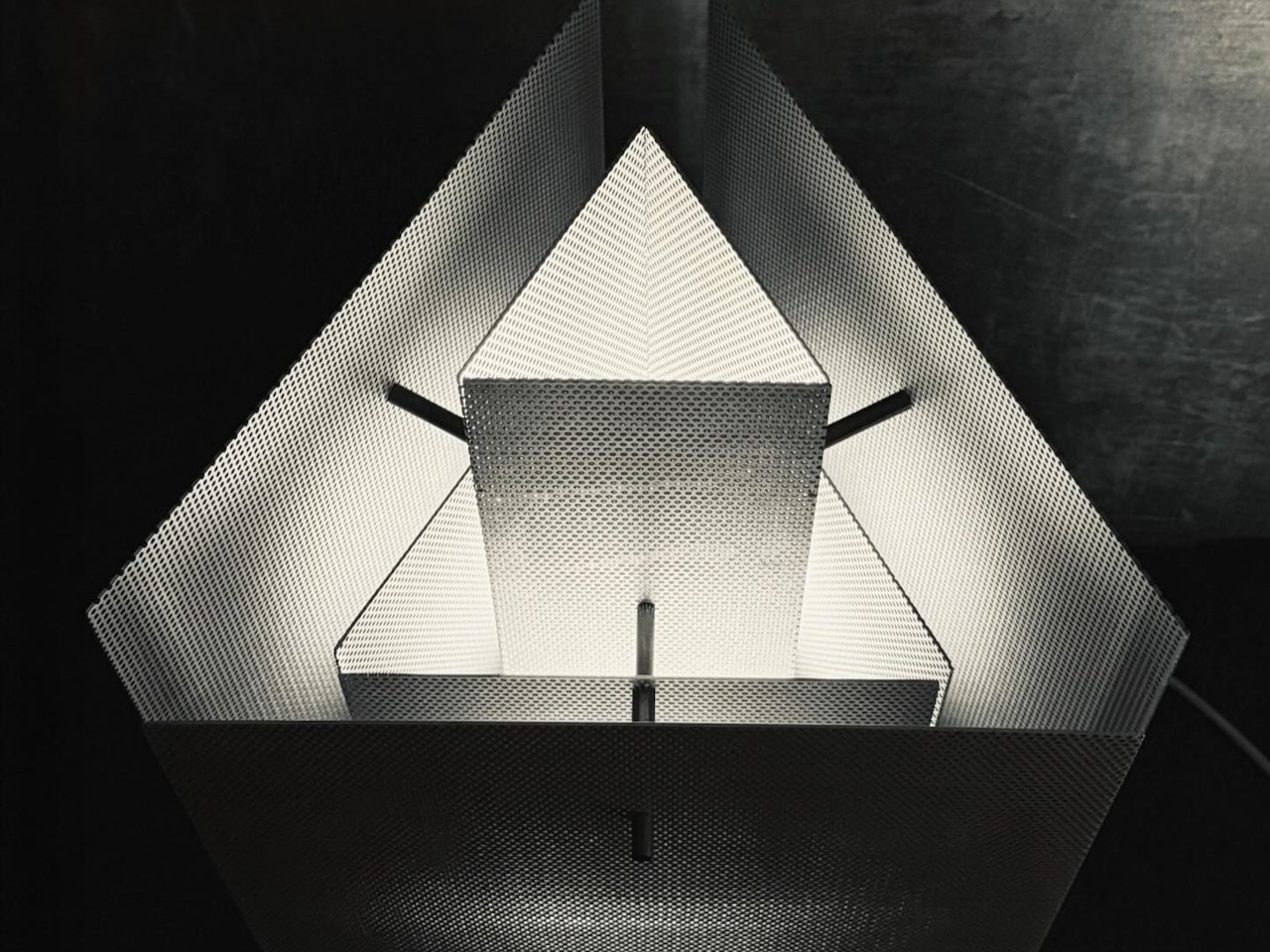
Lighting as a Tool to Weave Atmospheres
In some designs, lighting’s role goes beyond merely illuminating a space; it shapes the overall ambiance.
When shadows intersect with beams of light and intertwine in a dance-like motion, new visual dimensions emerge, adding depth to spaces that would otherwise appear flat without this interaction.
Between Art and Function
In this case, the lamp becomes more than just a practical tool. It transforms into a visual artwork that merges functional form with living sculpture.
The generation of changing light patterns creates a calm display that invites contemplation and urges passersby to pause, even for a brief moment, to observe this continuous transformation.
Interactive Design and Environmental Impact
This type of lighting is characterized by a dynamic interaction with the room’s elements. The visual effect does not rely solely on the lamp itself but is influenced by factors such as wall color, the arrangement of objects on the desk, and even the tilt angle of the metal shade.
Moreover, the natural light changes throughout the day enhance this diversity, making every visual scene a unique and unrepeatable experience.
Expert Appreciation
This interaction between lighting and space does not go unnoticed by specialists. Designers and art collectors alike recognize the value of such details, which blend aesthetic randomness with precise design simultaneously.
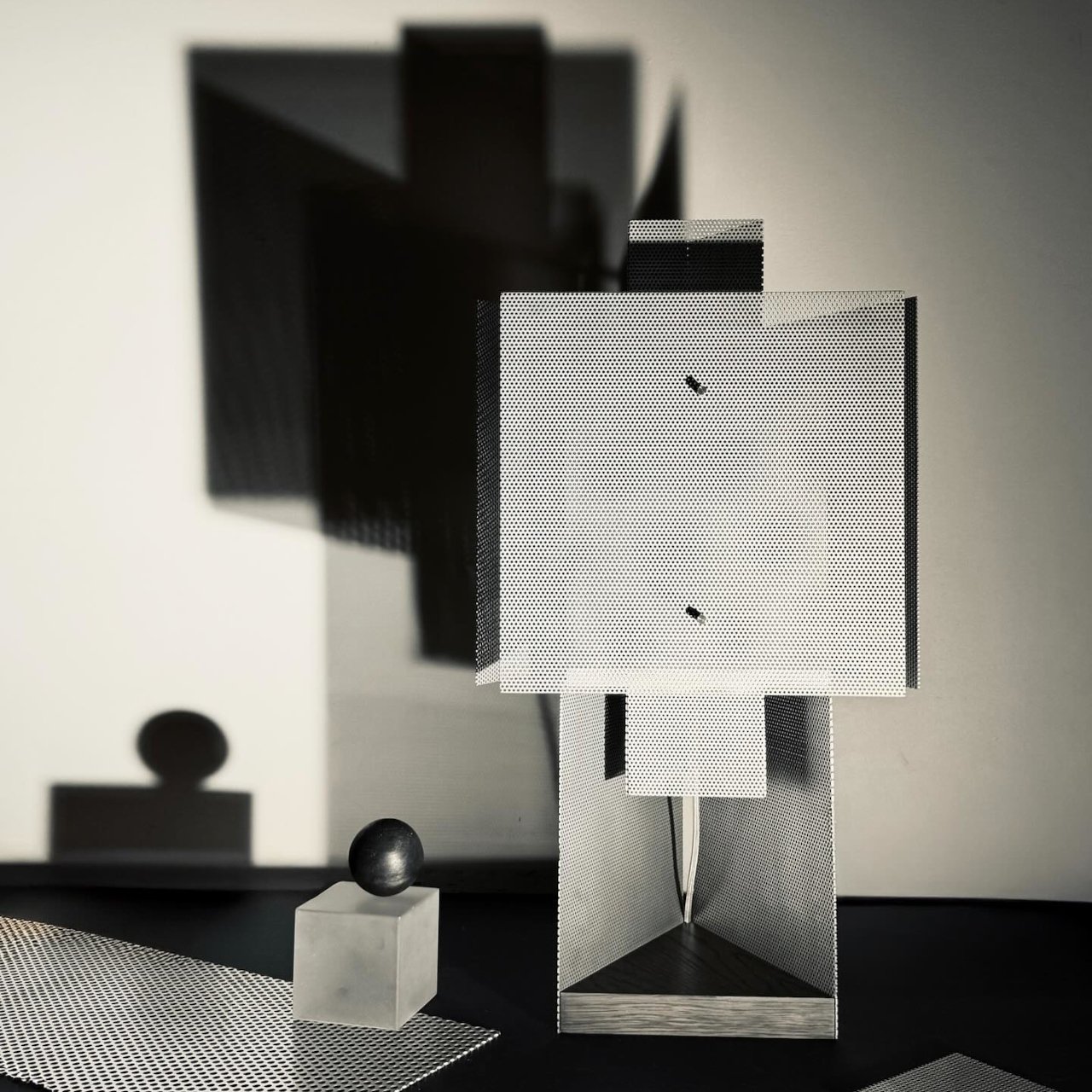
Quiet Design: A Presence That Doesn’t Need Noise
Good design doesn’t need to shout for attention. Sometimes, quiet confidence and meticulous details are enough for an element to express itself.
In this context, the lamp exemplifies how design can be both poetic and playful at the same time, without disrupting the room’s balance or competing with other elements.
Harmony Between Classic and Contemporary
One of the most notable features of successful design is its ability to seamlessly integrate into diverse environments. Soft colors and clean geometric lines make this lamp adaptable to its surroundings, whether in an antique or modern decor.
Even when turned off, it retains its charm as a stimulus for the imagination, as if hinting at an untold story.
Between Functional Performance and Playfulness
What distinguishes this design is the gray area between “tool” and “toy.”
It fulfills its role in lighting, yes, but it goes beyond that to become a trigger for visual interaction and curiosity.
It might simply inspire you to rearrange your furniture to discover new light interactions or to share this moment with others, just to see how their expressions change before this transforming scene.
A Theatrical Moment… Waiting
Ultimately, this lamp offers more than just illumination; it sets the stage for something.
When left to “perform its role,” you get the impression that the entire room is silently waiting for the next scene to begin.
